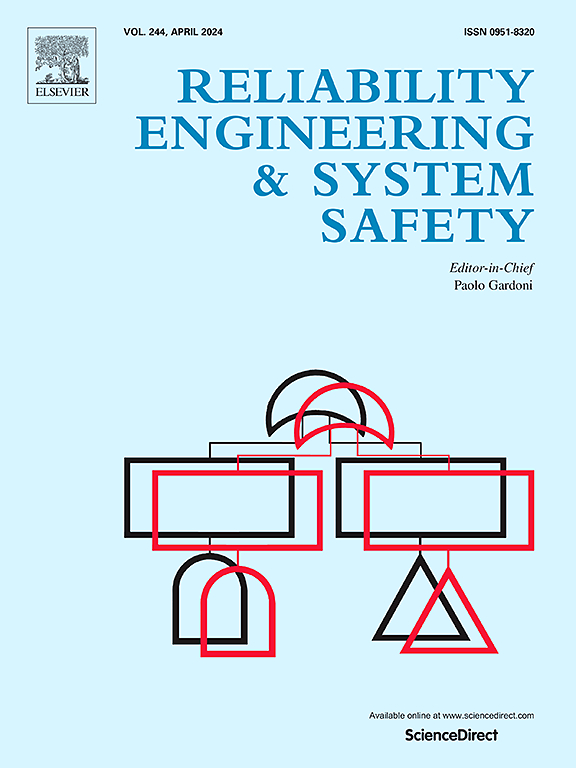A novel approach for structural system reliability evaluation using decoupled first-order reliability method and equivalent extreme-value event
IF 9.4
1区 工程技术
Q1 ENGINEERING, INDUSTRIAL
引用次数: 0
Abstract
The first-order reliability method (FORM) has been widely used in system reliability evaluation. However, calculating system reliability of structures with hundreds of components by FORM poses significant challenges. These difficulties arise because it requires determining multivariate normal integrals, which is generally impractical due to the high dimension of these integrals. Additionally, explicit expressions for the limit state functions (LSFs) of components cannot be generally obtained, leading to substantial computational costs for determining the gradients of LSFs. To address these issues, a novel approach called the equivalent extreme-value event-based decoupled FORM (EEVE-DFORM) is proposed. In EEVE-DFORM, the high-dimensional normal integrals are reduced to one-dimensional integrals of extreme value distributions according to the principle of equivalent extreme-value event (EEVE), and extreme value distributions are derived using the probability density evolution method (PDEM). In conjunction with a Galerkin-type stochastic finite element method (GSFEM), a decoupled FORM, where reliability computation is decoupled with finite element analysis, is developed to calculate the reliability of components with implicit LSFs. Five numerical examples are investigated to demonstrate the efficacy of the proposed methodology. The results indicate that the system reliability of series, parallel, and general structural systems can be accurately and efficiently determined using the proposed method, even when dealing with hundreds of components.
求助全文
约1分钟内获得全文
求助全文
来源期刊

Reliability Engineering & System Safety
管理科学-工程:工业
CiteScore
15.20
自引率
39.50%
发文量
621
审稿时长
67 days
期刊介绍:
Elsevier publishes Reliability Engineering & System Safety in association with the European Safety and Reliability Association and the Safety Engineering and Risk Analysis Division. The international journal is devoted to developing and applying methods to enhance the safety and reliability of complex technological systems, like nuclear power plants, chemical plants, hazardous waste facilities, space systems, offshore and maritime systems, transportation systems, constructed infrastructure, and manufacturing plants. The journal normally publishes only articles that involve the analysis of substantive problems related to the reliability of complex systems or present techniques and/or theoretical results that have a discernable relationship to the solution of such problems. An important aim is to balance academic material and practical applications.
 求助内容:
求助内容: 应助结果提醒方式:
应助结果提醒方式:


